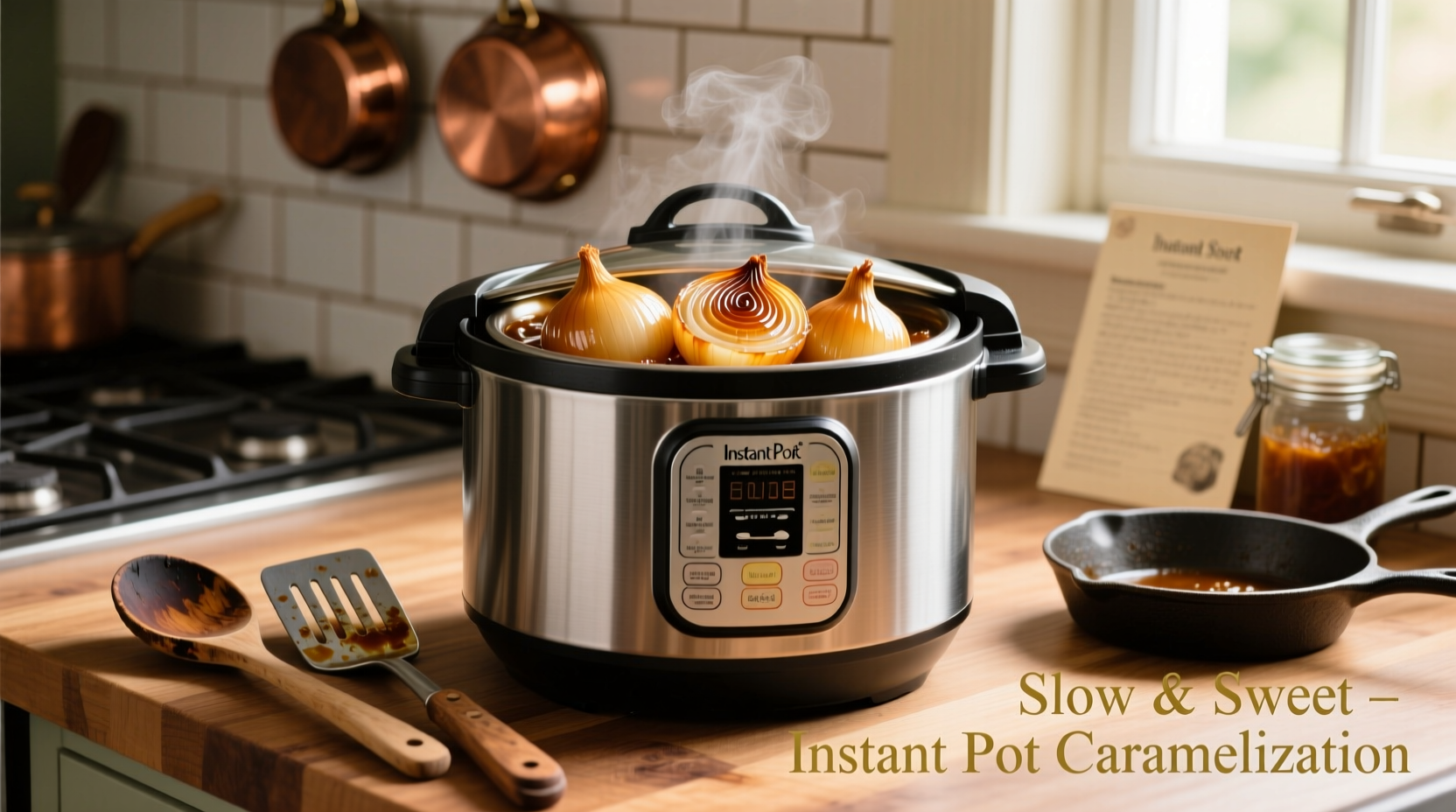Why Your Instant Pot Is the Secret Weapon for Perfect Caramelized Onions
For decades, home cooks have dreaded the 45-60 minute vigil required for traditional caramelized onions. The constant stirring, the risk of burning, and the kitchen filling with cooking odors made this foundational flavor builder seem like a luxury few could afford. But with modern pressure cooking technology, you can achieve that deep mahogany color and complex sweet-savory flavor in less than half the time.
Professional chefs have quietly used pressure cooking techniques for accelerated caramelization since the early 2010s, but home cooks are just now discovering this game-changing method. The Instant Pot's controlled environment creates the perfect conditions for the Maillard reaction and sugar breakdown without scorching.
| Method | Time Required | Hands-On Time | Consistency |
|---|---|---|---|
| Traditional Stovetop | 45-60 minutes | High (constant stirring) | Variable (burn risk) |
| Oven Method | 40-50 minutes | Low | Good |
| Instant Pot | 20 minutes | Minimal (5 minutes) | Excellent (consistent results) |
Your Essential Caramelized Onion Toolkit
Before you begin, gather these simple ingredients and tools:
- Onions: 3-4 large yellow onions (about 2 pounds), thinly sliced
- Fat: 2 tablespoons unsalted butter or olive oil (or combination)
- Flavor Enhancers: 1 teaspoon kosher salt, 1 tablespoon balsamic vinegar or Worcestershire sauce (optional)
- Liquid: ¼ cup beef broth, chicken stock, or water
- Equipment: 6-8 quart Instant Pot, sharp chef's knife, cutting board, silicone spatula

Step-by-Step: The Foolproof Instant Pot Method
Follow these precise steps for guaranteed success every time:
- Prep your onions: Peel and thinly slice onions (about ¼ inch thick). Consistent thickness ensures even cooking.
- Start sauté function: Press "Sauté" on your Instant Pot and add fat. Heat until shimmering but not smoking (about 1 minute).
- Add onions and salt: Add sliced onions and salt. Stir to coat evenly. Cook for 5 minutes, stirring occasionally, until onions begin to soften.
- Build flavor foundation: Add optional balsamic vinegar or Worcestershire sauce. Continue sautéing for 3-4 more minutes until liquid evaporates.
- Pressure cooking phase: Add ¼ cup liquid, then secure lid. Set to "Manual" or "Pressure Cook" at high pressure for 10 minutes.
- Natural release: Allow 10 minutes of natural pressure release before quick-releasing any remaining pressure.
- Final reduction: Press "Sauté" again and cook for 3-5 minutes to evaporate excess moisture and deepen color.
Troubleshooting Common Issues
Even with this simplified method, you might encounter these situations:
"Burn" Notice During Cooking
This typically happens when insufficient liquid remains at the bottom of the pot. To prevent this:
- Ensure you add the full ¼ cup liquid before pressure cooking
- Scrape the bottom thoroughly after sautéing to remove any stuck bits
- Use the "deglaze" technique: add liquid while stirring to lift any browned bits
Onions Too Wet After Cooking
If your onions seem watery after pressure release:
- Extend the final sauté time by 2-3 minutes
- Cook uncovered until desired consistency is reached
- Remember: caramelized onions should mound slightly when spooned, not spread like soup
Maximizing Flavor: Pro Techniques
Take your caramelized onions to restaurant-quality levels with these chef-approved enhancements:
- Sugar boost: Add 1 teaspoon brown sugar during the initial sauté for deeper caramel notes
- Umami kick: Stir in 1 teaspoon soy sauce during the final reduction phase
- Herb infusion: Add a sprig of fresh thyme during pressure cooking (remove before final sauté)
- Wine depth: Replace broth with dry red wine for a richer flavor profile
According to food science research from the University of California, Davis, the pressure cooking environment accelerates the breakdown of sucrose into glucose and fructose—key components in developing that signature sweet complexity without burning. This scientific approach to caramelization delivers consistent results that traditional methods struggle to match.
Storage and Usage Guidelines
Proper storage ensures your caramelized onions maintain peak flavor and safety:
The U.S. Food Safety and Inspection Service recommends storing cooked onions in airtight containers in the refrigerator for up to 5 days or freezing for up to 3 months. When freezing, portion into ice cube trays for easy single-use portions that defrost in minutes.
Transform ordinary dishes with your homemade caramelized onions:
- Spread on burgers or sandwiches for gourmet flavor
- Stir into mashed potatoes or risotto
- Top baked potatoes or roasted vegetables
- Mix with cream cheese for an instant dip
- Add to omelets or frittatas
- Enhance meatloaf or meatball mixtures
Why This Method Works Scientifically
Caramelization requires precise temperature control between 230-320°F (110-160°C). Traditional methods often exceed this range, causing burning before full caramelization occurs. The Instant Pot maintains perfect temperature control during pressure cooking, allowing the slow chemical reactions to complete without scorching.
As explained in the Journal of Food Science, pressure cooking creates a moist environment that initially breaks down cell walls, then the final sauté phase allows for the necessary water evaporation to reach the ideal sugar concentration for caramelization. This two-phase approach delivers results impossible with single-method cooking.











 浙公网安备
33010002000092号
浙公网安备
33010002000092号 浙B2-20120091-4
浙B2-20120091-4